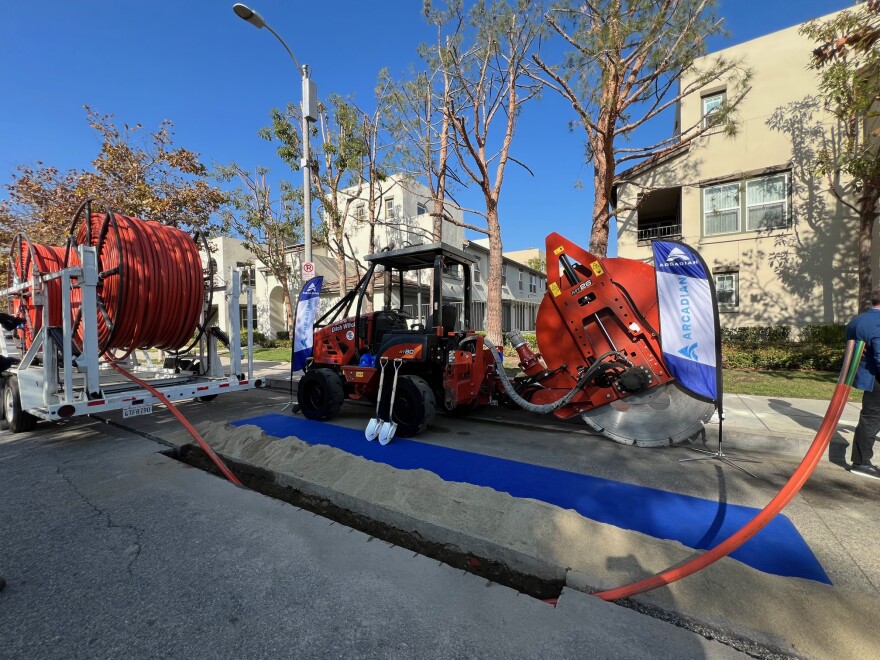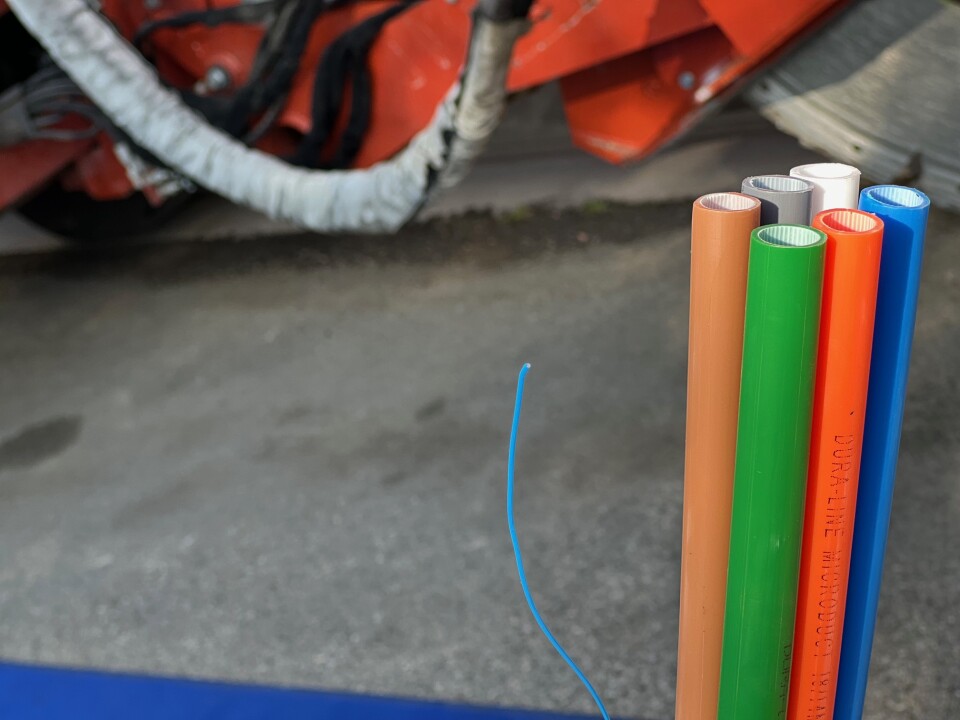Truth matters. Community matters. Your support makes both possible. LAist is one of the few places where news remains independent and free from political and corporate influence. Stand up for truth and for LAist. Make your year-end tax-deductible gift now.
Broadband Is Too Costly Or Not Available For Many. So California Is Building Its Own Public Network

Millions of Californians don't have internet at home because it’s either too expensive, unreliable or not available where they live. The state is working to change that by 2026.
Construction is underway on a new “middle-mile” network that would make it easier and less expensive for service providers to connect to disadvantaged rural, tribal and minority urban neighborhoods. In many cases, those companies have been reluctant to provide service because it’s not seen as profitable.
While 91% of households have internet service, an estimated 3.5 million Californians remain disconnected.
Officials say that by providing competition to commercial providers, the state's network could also help bring down internet prices for everyone.
The $5 billion project is the largest of its kind in the U.S. About 10,000 miles of fiber optic cable is being installed throughout California, including more than 500 miles in Los Angeles County.
You may see construction happening around the region, although existing networks are also being used to avoid disruption.
“2024 is a year many of us have been working towards — to move from planning and design into construction,” said Mark Monroe, deputy director of the middle-mile broadband initiative during a recent Middle-Mile Advisory Committee hearing.

“This is a once in a lifetime opportunity to really provide connectivity where there hasn't been,” said Liana Bailey-Crimmins, the state’s chief information officer and director of the California Department of Technology.
The middle-mile broadband initiative is part of the Broadband For All plan, a $6 billion state and federal investment to close the digital divide. In 2021, the state allocated $3.8 billion of those funds for the middle mile. In January, the project received a $1.5 billion boost in Gov. Gavin Newsom’s budget proposal ($250 million in 2024-25 and $1.25 billion in 2025-26). A revised budget plan is due in May.
Advocates have raised questions about the state’s ability to fund the entire network, given the projected $73 billion budget deficit that was recently announced. They also sounded the alarm after low-income communities in South and Southeast L.A. were deprioritized last summer, while plans to build in wealthier areas like Beverly Hills moved forward.
But Bailey-Crimmins said the state had "always intended" to build the entire network by 2026, and that the governor is "very committed” to funding the project, even as rising inflation drove construction costs up by about 40%.
“Every budget process is unique, but we are hoping that things go the way they should," she said.

The middle-mile network does not reach individual homes and businesses, however. That will be done by a “last mile” connection, where internet companies, municipalities, nonprofits and others would pay the state to tap in and deliver broadband to residents who live within a certain distance.
Middle mile vs last mile
Middle mile: Backbone network made up of high capacity fiber lines that carry large amounts of data at high speeds over long distances. The state owns and manages the system.
Last mile: Final leg of the network that brings the service into homes and businesses.
The network will go online to the public in "phases or as they become available," according to Bailey-Crimmins.
Breaking ground
More than 80% of the middle mile is now under contract. Caltrans is building about 4,000 miles of new infrastructure throughout the state, but the remainder will be established through a mix of purchase and lease agreements.

The state estimates it will spend about $340 million to complete the network in L.A. County. Four companies were awarded contracts to build in the area:
- Lumen (lease)
- CVIN (lease)
- Arcadian Infracom (joint-build)
- HP Communications (standalone Caltrans construction)
Lumen won a $400 million contract to build network infrastructure throughout the state. The telecom company is set to begin construction on the project near Los Angeles International Airport later this spring.
"Digital inclusion is critical for the United States to maintain its leading position as a global economic and innovation powerhouse," said Lumen CEO Kate Johnson. "Bringing high-speed broadband to unserved and underserved locations will accelerate greater and more diverse participation in our education system, the world's digital economy and access to high-quality health care."
In December, Arcadian held a groundbreaking event in Boyle Heights for the California portion of its L.A. to Phoenix fiber route. The project will help serve residents in East L.A. and extend to communities in Barstow and Needles (the route totals 306 miles, but only 40 are within L.A. County limits).
Joint-build or construction projects require more time because workers have to dig into the ground and put fiber in. But areas with lease or purchase agreements could begin connecting people as early as summer 2025.
“You don't have to permit, you don't have to close down lanes of the freeway in L.A. And you can just get that into those communities as quickly as possible,” Bailey-Crimmins said.
All projects must be completed by December 2026.








